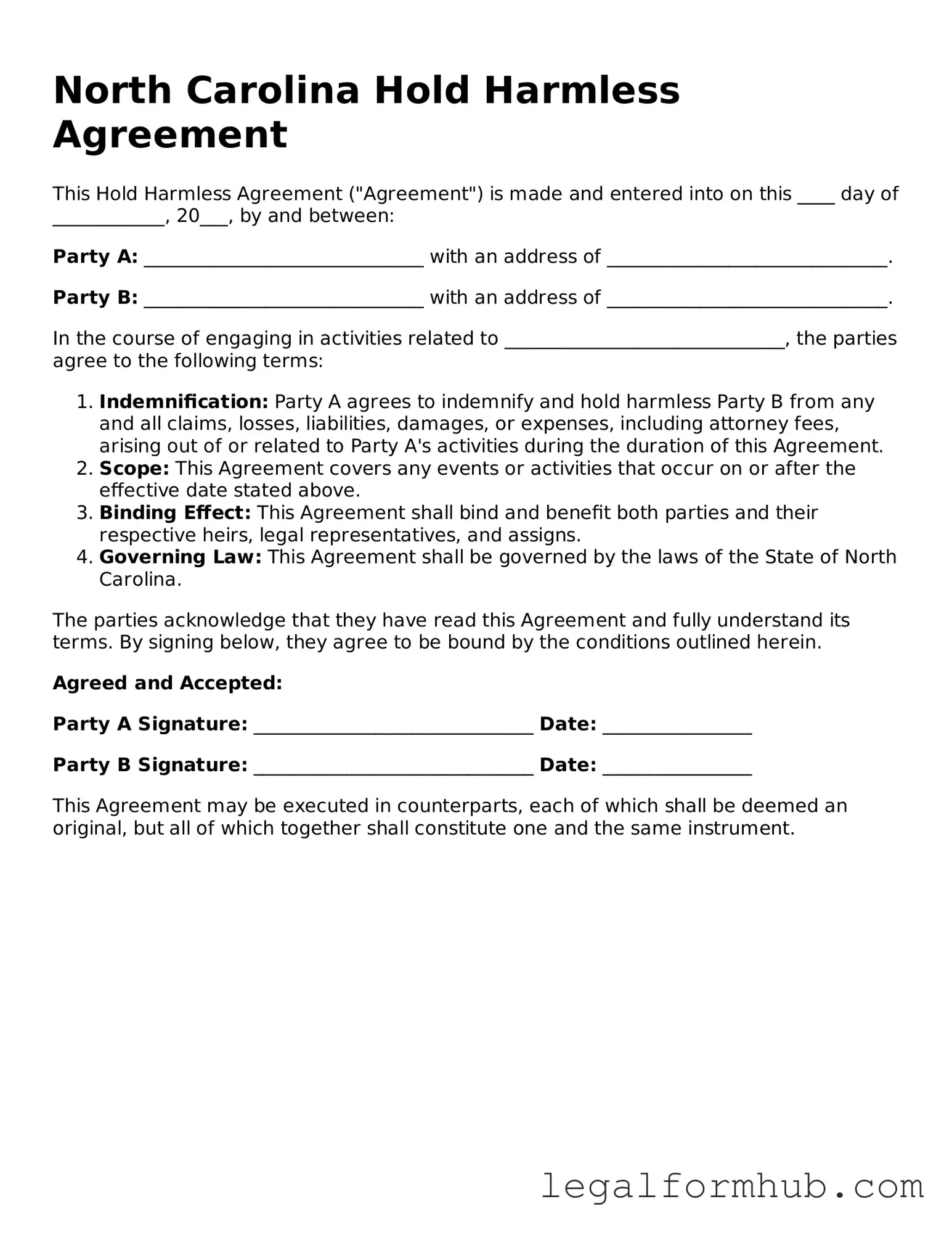The North Carolina Hold Harmless Agreement shares similarities with a Liability Waiver, often used in various activities, from sports to recreational events. Like the Hold Harmless Agreement, a Liability Waiver aims to protect one party from legal claims resulting from injuries or damages incurred during participation. Participants typically sign these waivers to acknowledge the risks involved, thereby agreeing not to hold the organization or individual liable for any accidents that may occur. Both documents serve to limit liability, but a Liability Waiver is usually more focused on specific activities rather than general indemnification.
Another document that aligns closely with the Hold Harmless Agreement is the Indemnity Agreement. This legal instrument obligates one party to compensate another for any losses or damages that may arise from a particular action or event. While the Hold Harmless Agreement primarily protects one party from claims, the Indemnity Agreement often involves a promise to cover costs associated with claims made against another party. Both documents emphasize the transfer of risk, but the Indemnity Agreement may also encompass financial responsibilities beyond mere liability protection.
The Release of Liability form is yet another document that bears resemblance to the Hold Harmless Agreement. This form is commonly used in situations where individuals engage in potentially hazardous activities. By signing a Release of Liability, participants agree to relinquish their right to sue for injuries sustained during the activity. Similar to the Hold Harmless Agreement, this document seeks to protect the organizer from legal repercussions. However, the Release of Liability is often more explicit about the risks involved and the waiver of specific rights, making it a more focused instrument for risk management.
If you are looking to formalize your vehicle sale, utilizing a practical Motor Vehicle Bill of Sale template can help ensure all necessary details are captured accurately. This document safeguards both the buyer and seller, providing a clear record of the transaction.
Lastly, the Non-Disclosure Agreement (NDA) can be considered similar in its protective intent, albeit in a different context. While the Hold Harmless Agreement deals with liability and claims, the NDA aims to safeguard confidential information shared between parties. Both documents serve to limit exposure to risk—one concerning legal claims and the other regarding proprietary information. Although their applications differ significantly, both agreements create a framework that promotes trust and accountability between the parties involved.
